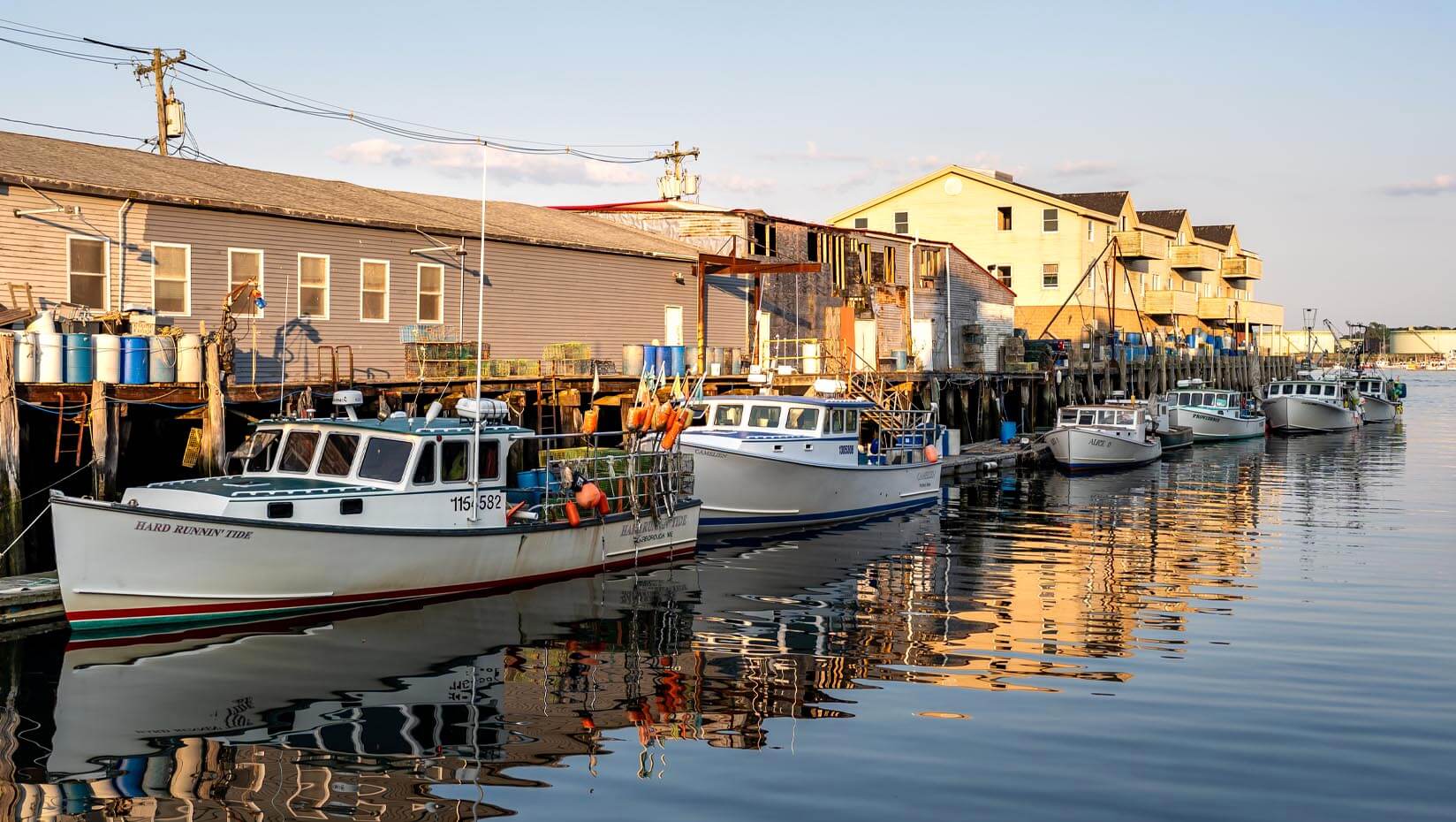
State’s future economy anchored in the sea, University of Maine president says
Joan Ferrini-Mundy highlighted the university’s leadership at today’s Maine Blue Economy Innovation Summit. ‘You don’t get to focus on an economy without thinking about the people who make and drive that economy,’ she said.
On Maine’s rugged coast, where shipbuilding, fishing and working waterfronts have defined generations, leaders say the future is once again tied to the sea — this time through aquaculture, marine technology and research.
University of Maine President Joan Ferrini-Mundy told attendees at the 2025 Maine Blue Economy Innovation Summit that the state’s success depends not only on innovation, but also on the people prepared to drive it.
“You don’t get to focus on an economy without thinking about the people who make and drive that economy — and that will be our trained, skilled workforce,” Ferrini-Mundy said in her plenary address at the Holiday Inn Portland-By the Bay.
She recalled UMaine’s history as a land grant university rooted in agriculture and forestry. That mission broadened more than 50 years ago when the university began federally funded research into cold-water marine environments — work that helped launch decades of leadership in the blue economy.
“Over the last five decades, of course, we’ve been a global leader in this state, in the blue economy,” she said. “It’s all about partnerships. It’s about communities coming together to bring this economy to a forefront that is critical for our state.”
Ferrini-Mundy highlighted the role of UMaine MARINE, the university’s hub for aquaculture and marine technology research, which connects faculty, students and industry partners across the state.
She noted UMaine’s network of coastal research facilities — including the Aquaculture Research Institute in Orono; the Center for Cooperative Aquaculture Research in Franklin; the Darling Marine Center in Walpole; and the Down East Institute in Beals, which serves as the Marine Science Field station for the University of Maine at Machias.
“Our researchers are working on sustainable aquaculture methods, new feed alternatives and innovations that strengthen Maine’s seafood sector,” she said.
She added that UMaine scientists also collaborate with boatbuilders and coastal communities on projects ranging from vessel design to extreme weather.
“We see ourselves as Maine’s research and development department, advancing basic science, applied research and innovation that keep our communities strong and our economy competitive,” Ferrini-Mundy said.
The Oct. 3 summit drew business leaders, researchers, policymakers and students from across the state. The agenda included plenary remarks, panel discussions, breakout sessions and an innovation showcase. Program tracks focused on aquaculture and fisheries, coastal engineering and boatbuilding, and community resilience.
Michael Duguay, commissioner of the Maine Department of Economic and Community Development, delivered the keynote address.
The sea has always shaped Maine’s economy, he said — from shipyards to lobster boats. What’s changing is how the state is harnessing that connection through aquaculture, advanced marine technology and ocean-based research.
“Our blue economy touches every coastal town in Maine,” Duguay said. “It supports tens of thousands of jobs, strengthens our working waterfronts and positions us to lead in industries of the future.”
Maine’s maritime industries have always been about adapting to change.
“Shipbuilding, fishing and maritime trade weren’t just industries — they were ways of life,” Duguay said. “But what defines us is the ability to evolve.”
That evolution is accelerating, with aquaculture leading the way.
“Maine is the largest producer of farmed seaweed in the United States, and the value of our aquaculture industry has doubled in the last decade,” Duguay said. “This isn’t just about oysters and mussels. It’s about kelp as a food source and as an input for everything from animal feed to cosmetics. It’s about salmon and trout farming to meet rising demand for protein.”
He also pointed to growth areas such as seafood processing, biotechnology and advanced materials.
“Our tradition of boatbuilding, combined with new composite technologies, positions Maine at the forefront of sustainable marine transportation,” he said. “And marine biotech — from pharmaceuticals to new materials — is another frontier where our researchers are already laying the groundwork.”
State support has been crucial in preparing the industry for its next phase, Duguay said. More than $10 million in grants were directed to businesses and nonprofits after last winter’s storms.
“Those grants prevented closures, retained local employment and helped rebuild stronger infrastructure,” he said.
That momentum extends to workforce development.
“By partnering with universities, community colleges and trade programs, we’re training Mainers for careers in aquaculture, boatbuilding and marine technology.”
UMaine was central throughout the summit. Debbie Bouchard, director of the Aquaculture Research Institute, moderated a panel, while researchers Damian Brady and Sarah Barker shared the stage. Breakout sessions also featured UMaine experts from the Advanced Structures and Composites Center and Maine Sea Grant.
Visit UMaine’s website to learn more about its efforts to grow the state’s blue economy.
Contact: David Nordman, david.nordman@maine.edu
